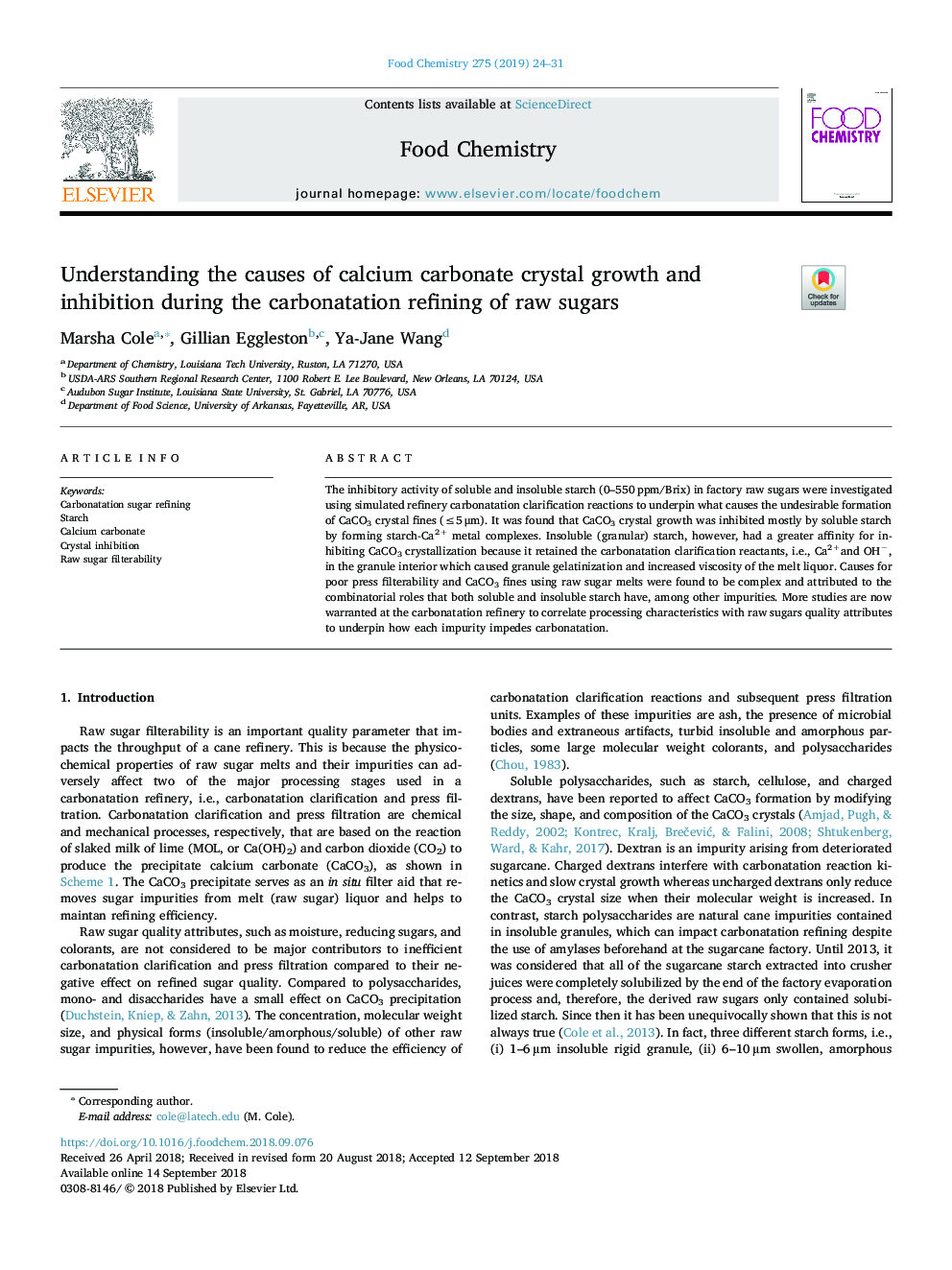| Article ID | Journal | Published Year | Pages | File Type |
|---|---|---|---|---|
| 10154402 | Food Chemistry | 2019 | 8 Pages |
Abstract
The inhibitory activity of soluble and insoluble starch (0-550â¯ppm/Brix) in factory raw sugars were investigated using simulated refinery carbonatation clarification reactions to underpin what causes the undesirable formation of CaCO3 crystal fines (â¤5â¯Î¼m). It was found that CaCO3 crystal growth was inhibited mostly by soluble starch by forming starch-Ca2+ metal complexes. Insoluble (granular) starch, however, had a greater affinity for inhibiting CaCO3 crystallization because it retained the carbonatation clarification reactants, i.e., Ca2+and OHâ, in the granule interior which caused granule gelatinization and increased viscosity of the melt liquor. Causes for poor press filterability and CaCO3 fines using raw sugar melts were found to be complex and attributed to the combinatorial roles that both soluble and insoluble starch have, among other impurities. More studies are now warranted at the carbonatation refinery to correlate processing characteristics with raw sugars quality attributes to underpin how each impurity impedes carbonatation.
Keywords
Related Topics
Physical Sciences and Engineering
Chemistry
Analytical Chemistry
Authors
Marsha Cole, Gillian Eggleston, Ya-Jane Wang,
